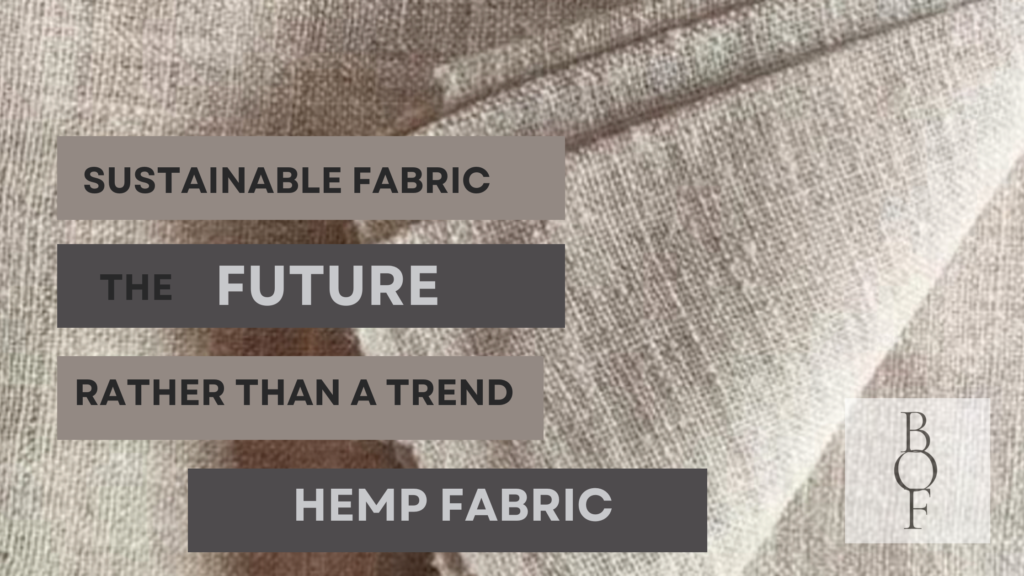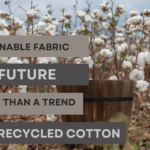
Introduction
Hemp fabric is a type of textile that is made from the fibers of the hemp plant. Hemp is a variety of the Cannabis sativa plant species, but it is grown specifically for its fibers and seeds, and it is not psychoactive. Hemp has been used for centuries to make a variety of products, including fabric, paper, rope, and more.
Hemp fabric is known for being durable, soft, and sustainable. It is often used to make clothing, bags, home decor items, and other products. Hemp fabric is breathable and absorbent, making it a good choice for clothing and other items that come into contact with the skin. It is also resistant to bacteria and UV light, which makes it a durable and long-lasting choice for products such as outdoor gear and bags.
Hemp fabric is also considered to be a more sustainable and eco-friendly alternative to other fabrics, such as cotton or synthetic fibers. Hemp requires less water to grow than cotton, and it can be grown without the use of pesticides or herbicides. Hemp also has a fast growth rate and can be grown in a variety of climates, which makes it a versatile and sustainable crop.
Overall, hemp fabric is a durable, sustainable, and versatile material that is used in a wide range of products. If you are interested in supporting environmentally friendly and ethical practices, consider choosing products made from hemp fabric.
History
Hemp is a variety of the Cannabis sativa plant species, and it has been used for centuries to make a variety of products, including fabric, paper, rope, and more. Hemp has a long and varied history, with evidence of its use dating back to ancient civilizations in Asia, Africa, and Europe.
Hemp was widely cultivated in ancient China, where it was used to make clothing, paper, and other products. It was also used in ancient India, where it was considered to be a sacred plant and was used to make rope and fabric. In ancient Greece and Rome, hemp was used to make clothing, sails, and other products.
During the Middle Ages, hemp was an important crop in Europe, and it was used to make rope, canvas, and other products. In the United States, hemp was grown for its fibers and seeds, and it was used to make a variety of products, including fabric, paper, and rope.
In the 20th century, the use of hemp declined due to the increasing popularity of synthetic fibers and the criminalization of marijuana, which is also a variety of the Cannabis sativa plant. However, in recent years, there has been a resurgence of interest in hemp, and it is now grown and used for a variety of purposes, including the production of fabric, food, and other products.
Today, hemp fabric is widely available and is used to make a variety of products, including clothing, bags, home decor items, and more. It is known for being durable, soft, and sustainable, and it is considered to be a more eco-friendly alternative to other fabrics.
Care Instructions
Hemp fabric is a durable and long-lasting material, and with proper care, it can last for many years. Here are some care instructions for hemp fabric:
- Wash in cold water: Hemp fabric can shrink when washed in hot water, so it is best to wash it in cold water to prevent shrinkage.
- Use mild detergent: Choose a mild, plant-based detergent to wash your hemp fabric. Avoid using harsh chemicals or bleach, as they can damage the fibers and cause fading.
- Dry on a low or medium heat setting: Hemp fabric can take longer to dry than other fabrics, so it is best to dry it on a low or medium heat setting. If you prefer to air dry your hemp fabric, hang it in a well-ventilated area out of direct sunlight.
- Iron on a low heat setting: Hemp fabric can be ironed on a low heat setting to remove wrinkles. Avoid using a high heat setting, as it can cause the fabric to scorch or shrink.
- Avoid excessive exposure to sunlight: Hemp fabric is resistant to UV light, but it can fade over time if exposed to excessive sunlight. To prevent fading, avoid storing hemp fabric in direct sunlight or hang it in a well-ventilated area out of direct sunlight when not in use.
By following these care instructions, you can help to keep your hemp fabric looking its best and extend its lifespan.
Check out some of Hemp clothing collections :



